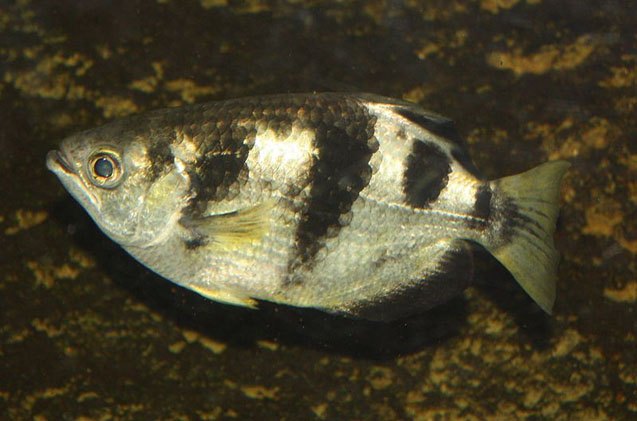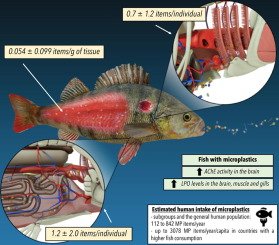Archer fish may suffer from common health issues like fin rot and parasitic infections. Poor water quality often exacerbates these problems.
Archer fish are fascinating creatures known for their unique hunting technique of shooting water jets to knock insects off branches. Keeping them healthy requires careful attention to their habitat and diet. Maintaining clean water, proper filtration, and balanced nutrition is crucial to prevent diseases.
Regular monitoring can help detect early signs of illness, such as unusual behavior or discoloration. Treating water with appropriate medications can address issues like fin rot and parasites. Creating a stress-free environment by mimicking their natural habitat also promotes overall well-being. Proper care ensures these remarkable fish thrive in captivity.

Credit: www.petguide.com
Introduction To Archer Fish
The Archer Fish is a unique species known for its ability to shoot water at insects. This fascinating fish has captivated many hobbyists and researchers. Understanding its health problems requires knowledge of its characteristics and habitat.
Unique Characteristics
Archer Fish have a slender body with a flat head. They are known for their remarkable accuracy in shooting water. They can target and knock down insects several feet away. Their eyes are specially adapted to focus on objects above water. This adaptation makes them excellent hunters.
Habitat And Natural Behavior
Archer Fish are found in brackish waters of Southeast Asia. They thrive in mangroves, estuaries, and river mouths. They prefer shallow waters where they can hunt insects. These fish live in groups and exhibit social behavior. They often hunt together and share food.
| Characteristic | Description |
|---|---|
| Body Shape | Slender with a flat head |
| Hunting Technique | Shoots water at insects |
| Habitat | Brackish waters, mangroves |
| Social Behavior | Live and hunt in groups |
To keep Archer Fish healthy, replicate their natural habitat. Ensure they have enough space to swim and hunt. Monitor water quality to prevent diseases. Regularly check for signs of stress or illness.

Credit: www.latimes.com
Recognizing Health Problems
Recognizing health problems in your Archer Fish is crucial. Early detection helps in providing timely treatment. This section will guide you through recognizing behavioral and physical signs of illness.
Behavioral Signs
Archer Fish show distinct behavioral changes when they are unwell. Observing these changes can help you act fast.
- Loss of Appetite: A healthy Archer Fish eagerly eats. If your fish refuses food, this is a concern.
- Lethargy: Archer Fish are active swimmers. Lethargy or slow movements indicate problems.
- Erratic Swimming: Unusual swimming patterns such as darting or spiraling can signal distress.
- Isolation: Sick fish often isolate themselves from the group.
Physical Symptoms
Physical symptoms are visible indicators of health issues. Regular checks can help in early detection.
| Symptom | Description |
|---|---|
| Discoloration: | Look for any unusual color changes or spots. |
| Fin Rot: | Frayed or disintegrating fins indicate a severe issue. |
| Swollen Abdomen: | A bloated belly can suggest internal problems. |
| White Spots: | White spots on the body may indicate Ich disease. |
Common Diseases
Archer fish, like other aquarium fish, are prone to diseases. Knowing the common diseases helps in early detection and treatment. Below are some common diseases affecting archer fish.
Ichthyophthirius (ich)
Ichthyophthirius, often called Ich, is a common parasite. It appears as white spots on the fish’s body and fins.
Symptoms:
- White spots on skin and gills
- Fish rubbing against objects
- Labored breathing
Treatment:
- Raise water temperature to 86°F (30°C)
- Add aquarium salt
- Use anti-parasitic medications
Fungal Infections
Fungal infections are caused by various fungi. They appear as white, cotton-like patches on the fish.
Symptoms:
- White, cotton-like growths
- Loss of appetite
- Sluggish behavior
Treatment:
- Isolate infected fish
- Use antifungal medications
- Maintain clean water conditions
Parasites In Archer Fish
Archer fish are stunning and unique creatures. They are known for their remarkable ability to shoot water jets at prey. But they, like other fish, can be affected by parasites. These parasites can cause various health issues in archer fish. Understanding these parasites is crucial for maintaining their health.
Internal Parasites
Internal parasites live inside the archer fish’s body. They can infest organs like the intestines and stomach.
Some common internal parasites include:
- Tapeworms: Long, flat worms that attach to the intestines.
- Roundworms: These look like small, white threads.
- Protozoa: Single-celled organisms that can cause severe illness.
Signs of internal parasites in archer fish include:
- Loss of appetite
- Weight loss
- Swollen abdomen
- Abnormal feces
Internal parasites can be treated with medicated food. It’s important to follow the treatment properly.
External Parasites
External parasites live on the surface of the archer fish’s body. They can attach to the skin, gills, and fins.
Some common external parasites include:
- Ich: Also known as white spot disease, it appears as white dots on the fish.
- Fish lice: Small, flat parasites that are visible to the naked eye.
- Anchor worms: These look like tiny threads sticking out of the fish’s skin.
Signs of external parasites in archer fish include:
- Visible spots or lice on the body
- Scratching against objects
- Labored breathing
- Faded colors
External parasites can be treated with salt baths or specialized medications. Always quarantine new fish to prevent the spread of parasites.
Water Quality Issues
Archer fish are fascinating creatures, but they need special care. One of the most important aspects of their care is maintaining water quality. Poor water quality can lead to health problems and even death.
Optimal Water Conditions
Archer fish thrive in brackish water. This means the water should have a mix of fresh and saltwater. Here are the optimal water conditions for archer fish:
- Temperature: 75-82°F (24-28°C)
- pH Level: 7.0-8.0
- Salinity: 1.005-1.015 specific gravity
- Ammonia: 0 ppm
- Nitrite: 0 ppm
- Nitrate: Less than 20 ppm
Testing And Monitoring
Regularly testing the water is crucial for archer fish health. Use a reliable test kit to check the water parameters. Here’s a simple checklist for monitoring water quality:
- Test water temperature daily.
- Check pH levels weekly.
- Measure salinity every week.
- Test ammonia, nitrite, and nitrate levels bi-weekly.
If any parameter is off, take action immediately. Adjust the water conditions to keep your archer fish healthy. Regular water changes are also essential. Replace 10-20% of the tank water every week. This helps maintain optimal water quality and prevent health issues.
Nutritional Deficiencies
Archer fish are fascinating creatures known for their unique hunting skills. But like all fish, they need a balanced diet to stay healthy. Nutritional deficiencies can lead to serious health problems. This section explores the signs of poor nutrition and provides balanced diet recommendations.
Signs Of Poor Nutrition
Archer fish show various signs of poor nutrition. These signs include:
- Loss of color: Fish may look pale or dull.
- Lethargy: Fish may move slowly or appear tired.
- Poor growth: Fish may not grow as expected.
- Weakened immune system: Fish may get sick often.
Watch for these signs to ensure your fish stay healthy.
Balanced Diet Recommendations
Providing a balanced diet is key to preventing nutritional deficiencies. Here are some recommendations:
- Protein: Include insects and small fish.
- Vitamins: Offer a variety of foods like brine shrimp and bloodworms.
- Minerals: Use commercial fish food with added minerals.
- Fiber: Include plant-based foods like algae wafers.
Below is a table summarizing the essential nutrients and their sources:
| Nutrient | Source |
|---|---|
| Protein | Insects, small fish |
| Vitamins | Brine shrimp, bloodworms |
| Minerals | Commercial fish food |
| Fiber | Algae wafers |
Ensuring a balanced diet helps keep your archer fish vibrant and active.
Stress And Its Impact
Archer fish are fascinating aquatic creatures known for their unique hunting skills. However, stress can impact their health. Understanding stress causes and solutions is crucial for maintaining their well-being.
Causes Of Stress
- Poor Water Quality: Dirty water can stress archer fish.
- Improper Tank Size: Small tanks can make fish feel cramped.
- Overcrowding: Too many fish in one tank can cause stress.
- Loud Noises: Sudden sounds can startle and stress fish.
- Lack of Hiding Spots: Fish need places to hide to feel safe.
Stress Reduction Techniques
- Maintain Clean Water: Regular water changes keep the tank clean.
- Proper Tank Size: Ensure the tank is large enough for your fish.
- Controlled Population: Avoid overcrowding by keeping fewer fish.
- Minimize Noise: Keep the tank in a quiet area.
- Provide Hiding Spots: Add plants or decorations for hiding.

Credit: www.dailymail.co.uk
Treatment And Prevention
Ensuring your Archer Fish remains healthy involves proper care and knowledge. This section covers effective treatment and prevention of common health problems. Understanding these key aspects can help maintain your fish’s well-being.
Medications And Remedies
Medications play a crucial role in treating Archer Fish health issues. For bacterial infections, antibiotics can be effective. Always consult a vet for the right medication.
Anti-parasitic treatments are also important. For parasitic infections, medications like metronidazole are useful. Follow the dosage instructions carefully.
Herbal remedies can aid in recovery. Indian almond leaves help reduce stress and promote healing. Add these leaves to the tank for natural relief.
Preventative Measures
Preventative measures are essential for maintaining Archer Fish health. Regular water changes keep the tank clean and reduce disease risks. Aim for a 25% water change weekly.
Proper diet is crucial. Feed your fish a balanced diet, including live food like insects and small crustaceans. This ensures they get essential nutrients.
Ensure the tank has stable water parameters. Keep the pH between 6.5 and 7.5, and maintain a temperature of 75-82°F (24-28°C). Use a reliable heater and thermometer.
Quarantine new fish before adding them to the tank. This helps prevent the spread of diseases. A two-week quarantine period is ideal.
| Preventative Measure | Details |
|---|---|
| Water Changes | 25% weekly |
| Balanced Diet | Include live food |
| Water Parameters | pH 6.5-7.5, Temp 75-82°F |
| Quarantine | Two weeks |
Frequently Asked Questions
How Long Do Archer Fish Live?
Archer fish typically live for about 5-8 years in captivity. In the wild, their lifespan can be shorter due to predators.
Can We Eat Archer Fish?
Yes, you can eat archer fish. They are edible and often used in some Asian cuisines. Ensure they are properly cooked.
How Many Archer Fish Should Be Kept Together?
Keep 3-5 Archer fish together. They thrive in small groups and display natural behaviors. Provide ample space and hiding spots.
Do Archer Fish Make Good Pets?
Archer fish can be challenging pets. They need brackish water and a spacious tank. They also require live food and specific care.
Conclusion
Caring for archer fish requires attention to their health. Regular tank maintenance and proper diet are crucial. Monitor for common issues like fungal infections and stress. Early detection and treatment ensure your archer fish thrive. Prioritize their well-being to enjoy a vibrant, healthy aquatic companion.
